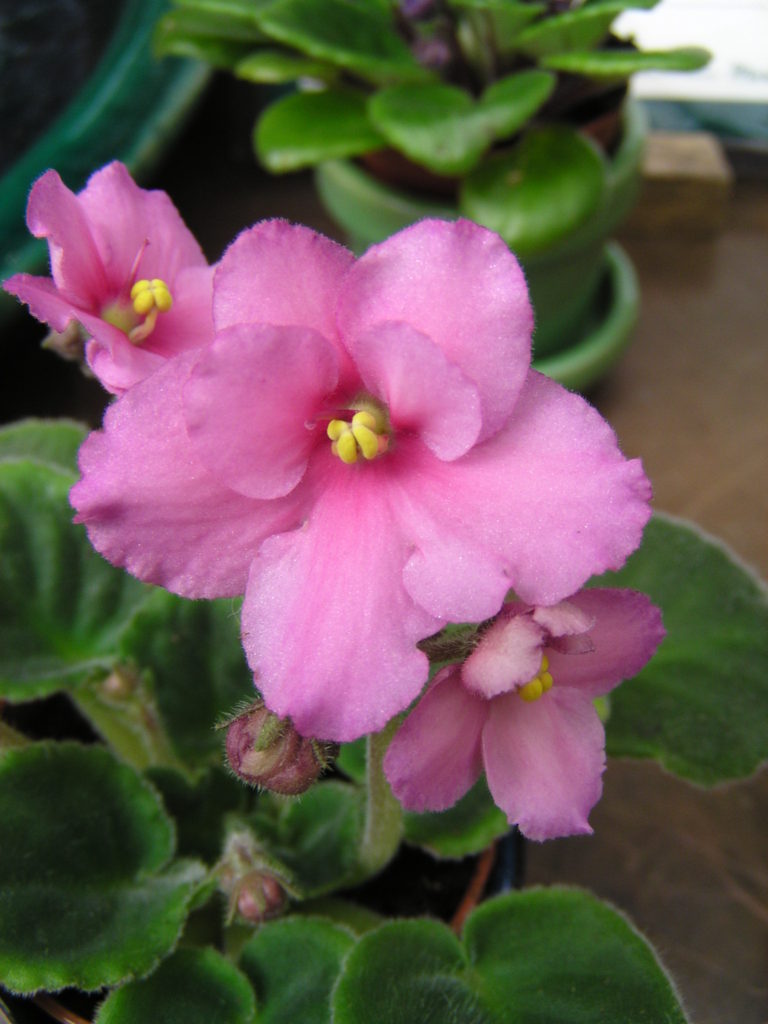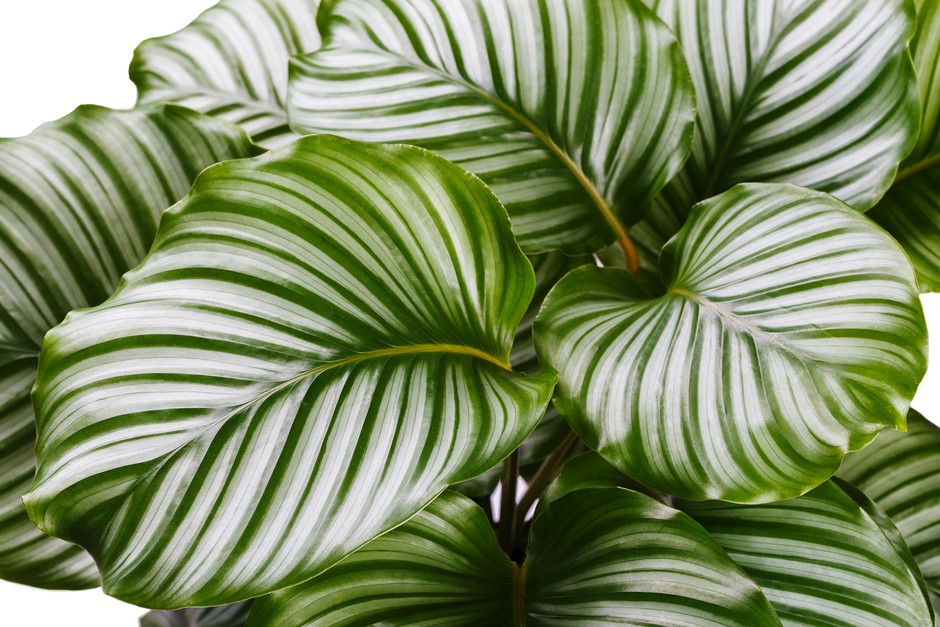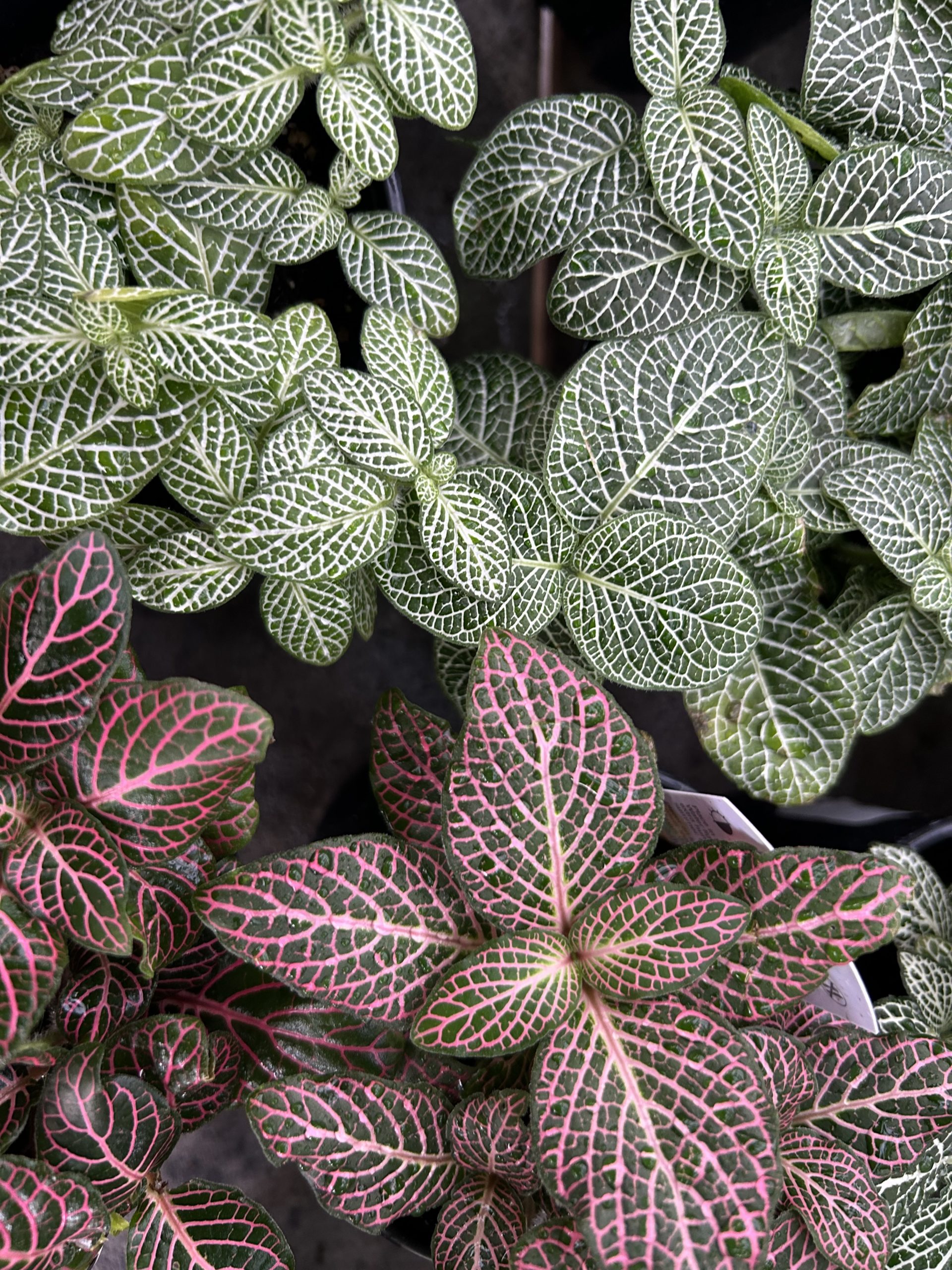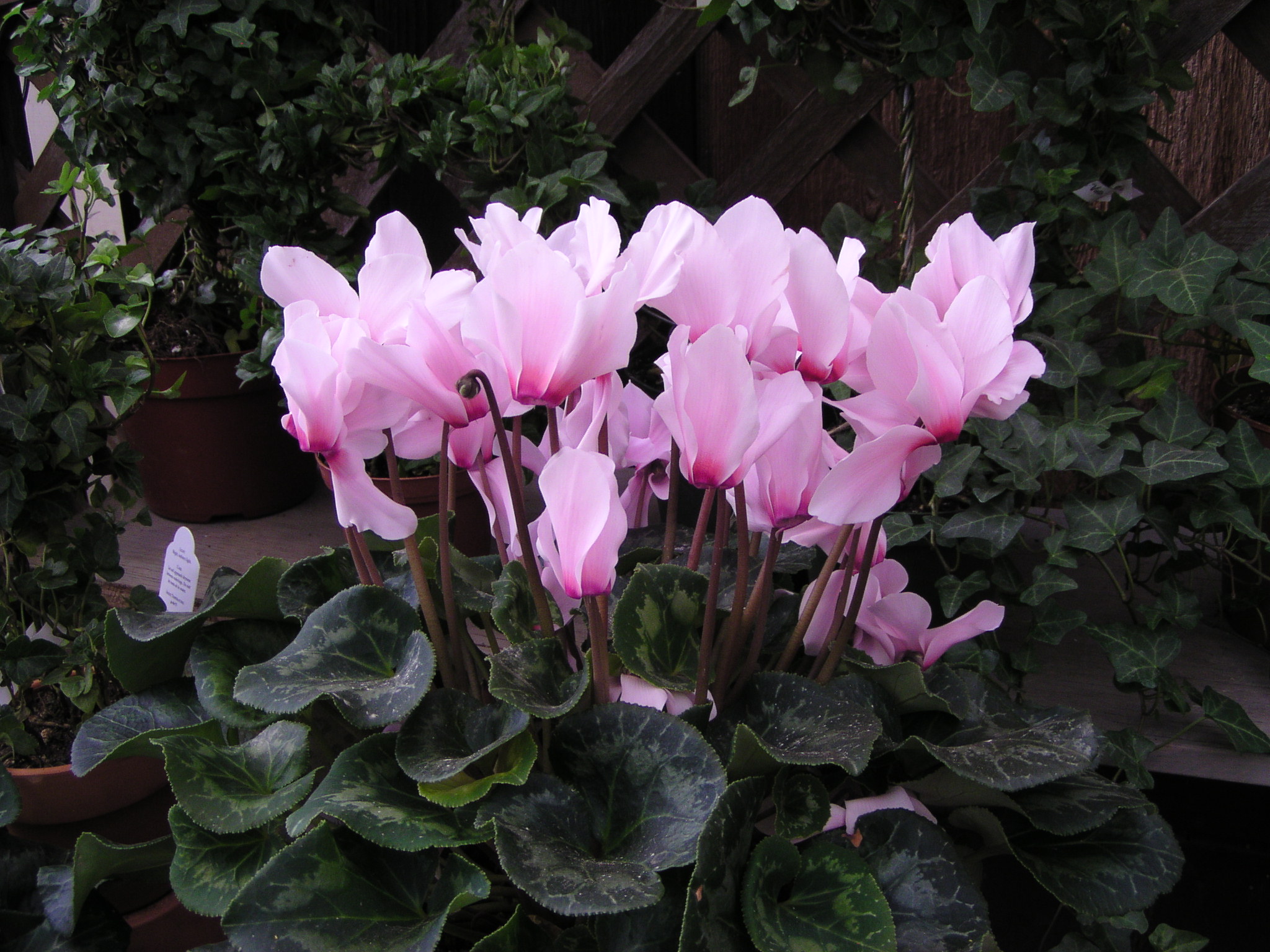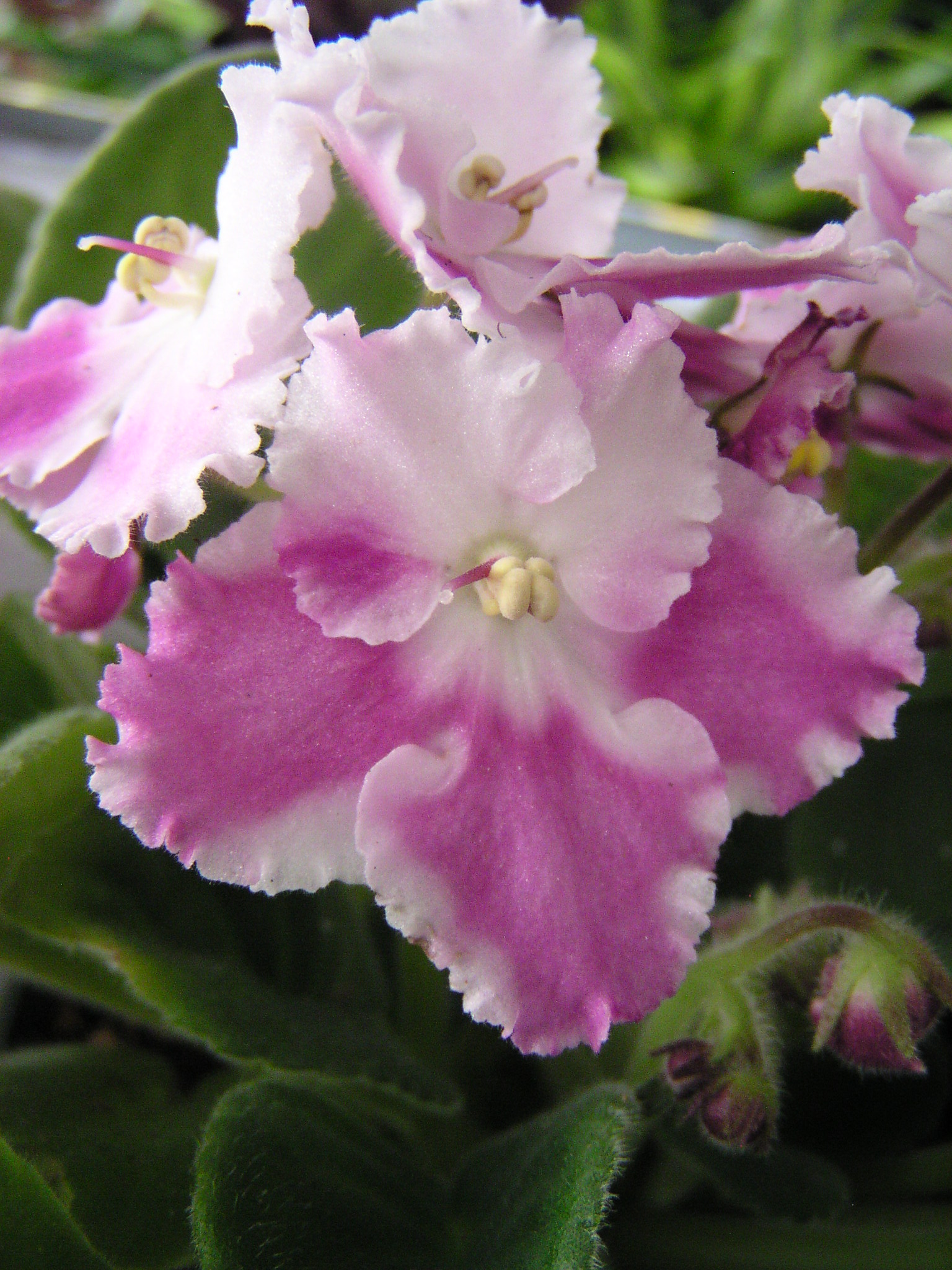
African Violets- Still in Style!
African Violet continues to be one of the most recognizable houseplants in the world. Thanks to incredible interest and breeding work done for many decades, we enjoy a wide range of flower colors, growth habits, bloom types, and leaf shapes! Flowers can be single, bi-colored, double, bell or star shaped, ruffled and so on. From standard size plants to the ever-popular miniatures, it is safe to say there is a different African Violet for every day of the year!
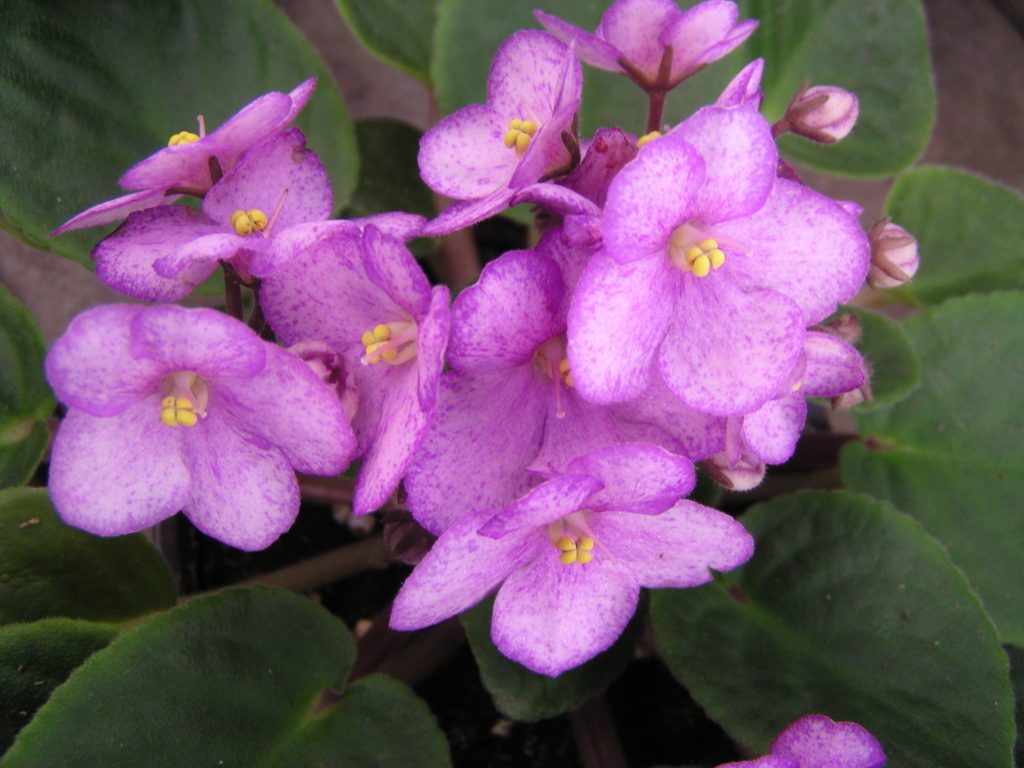
African Violets can be simple to grow and care for once you know the rules:
Light
African Violets prefer bright, indirect light – think western exposure. Avoid full southern exposure as intense direct sun can cause the leaves to ‘sunburn’. Northern exposure would provide insufficient light that can cause the plant’s leaves to stretch and become ‘leggy’.
Watering
soil should be slightly moist, never soggy. It is best to allow the top inch of soil to dry between waterings. Avoid wetting the leaves when watering, carefully water around the crown of the plant – not overhead! This can cause leaf spotting that is unsightly and lasting. Another option – place pot in a saucer of water for 5-10 minutes, allowing it to soak up water from the saucer. Then drain saucer of all water. Overwatering will kill your plant.
Humidity
Boost the humidity around your African violets. Use a pebble tray and place the plant on top of, but not in, the water.
Temperature
A constant 68 – 72-degree F temperature is ideal. Avoid cold drafts or air temperatures below 64 degrees F.
